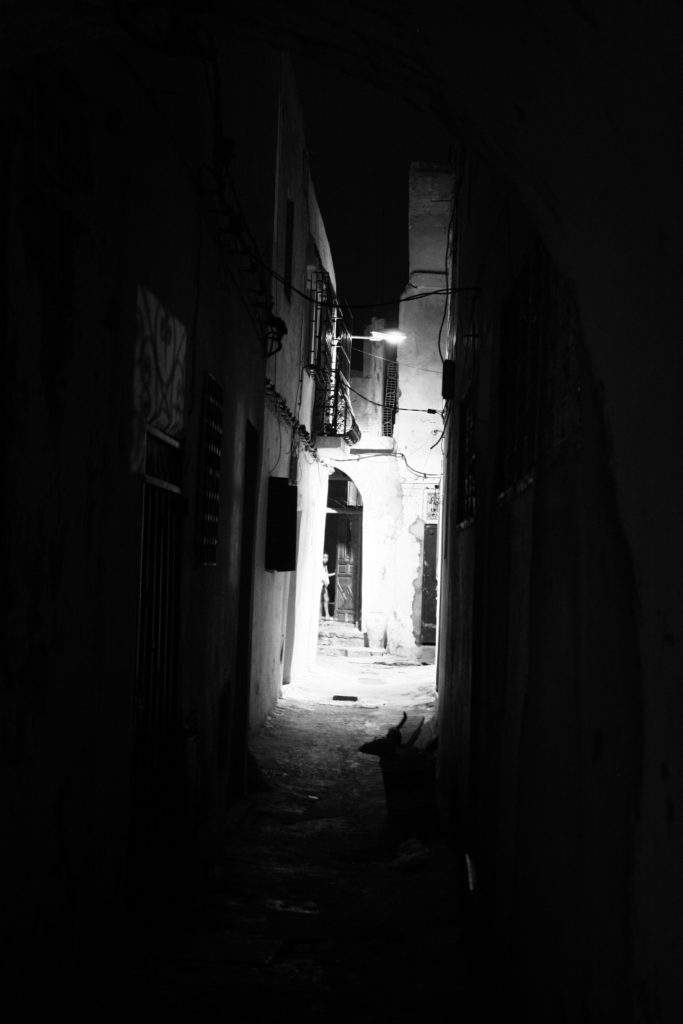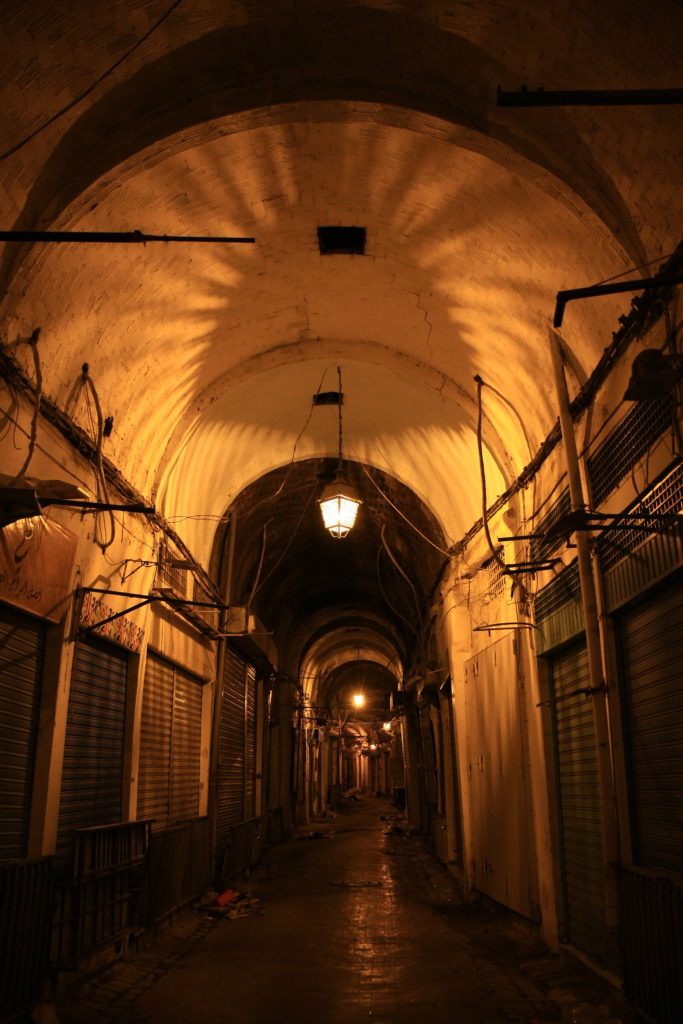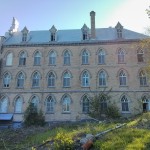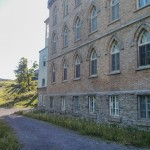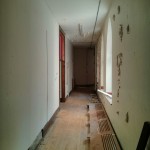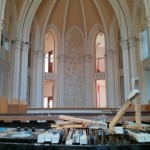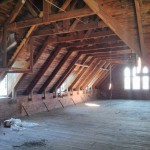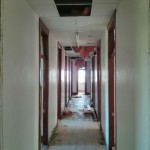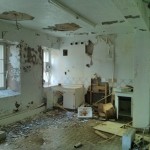Today, the sun was out and bright in perfectly clear skies, in other words, not studying day. Having wanted to check out the Saint-Anne-de-Beaupré basilica for a while, I figured this was a good enough reason to leave my books for an afternoon and get out of the city.
My tour of the basillica and the other smaller attractions in its vicinity only yielded mild satisfaction. The basilica itself was impressive, but lacked the imposing and solemn feeling you’d expect from such an important place of cult. Though well landscaped, the grounds around it were nothing more than facilities catering to the many pilgrims that come here each year, but on my way up the hill behind the basilica, I noticed another building of religious function hiding behind a curtain of vegetation. It was a monastery, at least that was what the sign on the main entrance indicated.

Nature was clearly well into the process of reclaiming its lost territory and the whole building looked decidedly empty. On closer inspection, windows were broken and the masonry was starting to fall apart in places. That’s when I noticed an opened door. I walked around the building to see if I could spot any sign of human activity and after noticing many more open entrances, I took it as an invitation to go inside.
 I entered through the refectory, made my way to the chapel and then proceeded to explore each and every floor all the way up to the roof. It was eerie. I’ve been inside abandoned buildings in the past, but the fact that this one had been a place of worship and religious devotion made the whole experience somewhat creepier. I could feel my heart pounding, I was super alert and watching every single step I took. For a good hour, I walked around this empty building that given it’s size, must have been occupied by well over an hundred in its heyday. I took many pictures during my tour but only a handful turned out OK enough; too bad I’m a poor photographer because the place was extremely photogenic. Aside from some furniture, the place had been gutted empty, even the wooden hand rails were gone. Not that I intended to steal anything, even if the site had been abandoned, it still had owner so nothing in there was mine to take, but I was certainly hoping for more religious paraphernalia.
I entered through the refectory, made my way to the chapel and then proceeded to explore each and every floor all the way up to the roof. It was eerie. I’ve been inside abandoned buildings in the past, but the fact that this one had been a place of worship and religious devotion made the whole experience somewhat creepier. I could feel my heart pounding, I was super alert and watching every single step I took. For a good hour, I walked around this empty building that given it’s size, must have been occupied by well over an hundred in its heyday. I took many pictures during my tour but only a handful turned out OK enough; too bad I’m a poor photographer because the place was extremely photogenic. Aside from some furniture, the place had been gutted empty, even the wooden hand rails were gone. Not that I intended to steal anything, even if the site had been abandoned, it still had owner so nothing in there was mine to take, but I was certainly hoping for more religious paraphernalia.

Once out, I went back to the village and asked some locals what they knew about the monastery. They told me it had been built at the beginning of the last century and was occupied for most of its history by nuns but otherwise, none were exactly sure how such a place became so derelict or what fate was awaiting it. Back home, a quick search on the web turned up heritage listings (1, 2). The monastery, built in 1906, had been a convent for the Redemptoristines nuns. Owing to their declining numbers and means to maintain and occupy their huge home, the nuns relocated near Montreal in the mid 1990s. After a string of occupants and dwindling interest in the property, it became too big of a burden so the owners, the Redemptorists monks, stopped heating the building (and doing any maintenance whatsoever on it). This Flickr page from someone who, just like me, had sneaked inside the convent uninvited, shows what the interior looked like before it was definitively abandoned in 2014. It’s staggering to see what two years of complete neglect does to infrastructure and how fast nature reclaims her rights.
There are plans to convert the property to a funeral home but thanks to it’s peculiar architecture (typically 1900s), the exterior has been declared heritage so at least the outer part of the convent should be preserved in that capacity for a while. However, given the size and age of the building, I entertain many doubts in its long-term survival as I don’t think a small regional business or city can afford the upkeep costs of such a place. Hopefully, that small Wikipedia article I wrote on it will preserve some of the memories.



